 VICTOR FRANKENSTEIN is currently playing in theaters, although by the time you read this it may very well not be, having slunk away in disgrace after failing to pull the box office mojo. It stars James McAvoy as Doctor Frankenstein and Daniel Radcliffe as Igor. It is yet another retelling of the Mary Shelley classic novel Frankenstein.
VICTOR FRANKENSTEIN is currently playing in theaters, although by the time you read this it may very well not be, having slunk away in disgrace after failing to pull the box office mojo. It stars James McAvoy as Doctor Frankenstein and Daniel Radcliffe as Igor. It is yet another retelling of the Mary Shelley classic novel Frankenstein.
Frankenstein; or, The Modern Prometheus by the Mary Wollstonecraft Shelley, although infused with elements of the Gothic novel and the Romantic movement, is considered to be one of the earliest examples of science fiction. It has been adapted many times for the screen, for television for comic books and has seen many, many editions, a rather large number of them lavishly illustrated. Frankenstein’s monster is an integral part of our pop culture. He appears in films other than adaptaion’s of Shelley’s work, sometimes to dramatic effect, sometimes to frighten and sometimes for laughs. Sometimes so inoffensively he will show up in movies for children.
But how has the creature created by Victor Frankenstein been depicted over almost two centuries?
Well, that is an interesting question and there is one clear answer to that, which I will get to in a moment.
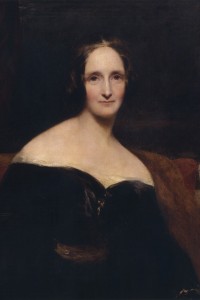 First let’s start with Mary Shelley. Shelley was the wife of the famous poet Percy Bysshe Shelley (eventually, that is. Before that they enjoyed a famously scandalous relationship while Percy was still married to another woman) The story goes that the couple spent a summer in Geneva at the home of the infamous Lord Byron. They, along with another guest. Doctor John Polidori, decided to have a competition to see who could write the best horror story. After thinking for days, Shelley dreamt about a scientist who created life and was horrified by what he had made; her dream later evolved into the novel’s story. The rest, as they say, is history.
First let’s start with Mary Shelley. Shelley was the wife of the famous poet Percy Bysshe Shelley (eventually, that is. Before that they enjoyed a famously scandalous relationship while Percy was still married to another woman) The story goes that the couple spent a summer in Geneva at the home of the infamous Lord Byron. They, along with another guest. Doctor John Polidori, decided to have a competition to see who could write the best horror story. After thinking for days, Shelley dreamt about a scientist who created life and was horrified by what he had made; her dream later evolved into the novel’s story. The rest, as they say, is history.
In the novel, because of the difficulty in replicating the minute parts of the human body, Victor makes the Creature large, about eight feet tall. As a result, the beautiful creation of his dreams is instead hideous, with yellow eyes and skin that barely conceals the muscle tissue and blood vessels underneath. That the monster is physically hideous is mentioned throughout the text, although there is not much description beyond that.
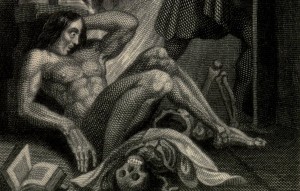 That description is ignored, however, in one of the earliest illustrations of the creature from the 1831 edition. The frontspiece by Theodor von Holst depicts the creature as gigantic (and quite buff) with an expression of surprise as it finds itself suddenly alive. The illustration also depicts Victor Frankenstein beating a hasty retreat out the door.
That description is ignored, however, in one of the earliest illustrations of the creature from the 1831 edition. The frontspiece by Theodor von Holst depicts the creature as gigantic (and quite buff) with an expression of surprise as it finds itself suddenly alive. The illustration also depicts Victor Frankenstein beating a hasty retreat out the door.
In 1910 the first motion picture adaptation was released by the Edison Studios. This 16-minute silent film features an actor identified as Charles Ogle as the creature. Here the monster is depicted as very tall, with wild hair and a facial expression that somewhat resembles a Japanese Kabuki mask.
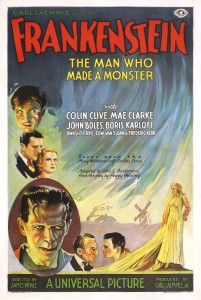 Although there were other adaptations both for stage and for screen (none of which survive today) the impact that one film has had on the public’s perception of the creature has not and probably will never be equalled as was the release of FRANKENSTEIN by Universal Studios in 1931. This was the production that made Boris Karloff and international star and cemented the look of Frankenstein for all time. Whether subsequent films borrow from Karloff’s creature and Jack Pierce’s famous makeup, or consciously stray from it, no other production can fully climb out of the shadow that it has cast on the public consciousness.
Although there were other adaptations both for stage and for screen (none of which survive today) the impact that one film has had on the public’s perception of the creature has not and probably will never be equalled as was the release of FRANKENSTEIN by Universal Studios in 1931. This was the production that made Boris Karloff and international star and cemented the look of Frankenstein for all time. Whether subsequent films borrow from Karloff’s creature and Jack Pierce’s famous makeup, or consciously stray from it, no other production can fully climb out of the shadow that it has cast on the public consciousness.
Karloff’s version of the creature has become ubiquitous. So much so that versions of the creature’s image, with his blocky forehead, droopy eyes, green skind and neck bolts, show up regularly in pieces of pop art, commercial advertising, even clipart! That particular image of the creature has become so recognizable that it does not even manage to induce fear in the viewer as Karloff’s creature once did. We are so used to seeing it out of its original context and forced into other entertainments. Abbott and Costello Movies. The Munsters. Hotel Transylvania.
The power of that original creature has been diluted, to be sure, but other artists have tried to re-empower Mary Shelley’s creature through paintings and other illustrations. Most notably artist Bernie Wrightson with his illustrated edition of Frankenstein, brought the creature back to its gothic and romantic roots with a series of very powerful pen and ink renderings.
 Frankenstein’s monster has shown up in a number of paintings by Frank Frazetta who has mostly stuck to the Karloff iteration, as has Basil Gogos in his series of paintings of the Universal Monsters. Boris, Simon Bisley, Alex Horley and numerous other fantasy artists have incorporated Frankenstein’s monster into their ouvre. The creature has also made appearances in a number of pop art offerings, sometimes alongside his bride (as portrayed by Elsa Lancaster in the 1935 sequel) and sometimes being courted by the likes of Marilyn Monroe.
Frankenstein’s monster has shown up in a number of paintings by Frank Frazetta who has mostly stuck to the Karloff iteration, as has Basil Gogos in his series of paintings of the Universal Monsters. Boris, Simon Bisley, Alex Horley and numerous other fantasy artists have incorporated Frankenstein’s monster into their ouvre. The creature has also made appearances in a number of pop art offerings, sometimes alongside his bride (as portrayed by Elsa Lancaster in the 1935 sequel) and sometimes being courted by the likes of Marilyn Monroe.
Frankenstein’s monster is with us. Despite the poor showing of this latest cinematic retelling, Frankenstein and his monster will find themselves being portrayed in popular media. On television, portrayed in a richly sympathetic performance by Rory Kinnear in the Showtime series Penny Dreadful, or on stage as in a recent smash hit production from London’s National Theater starring Benedict Cumberbatch (British TV’s Sherlock Holmes) and Johnny Lee Miller (US TV’s Sherlock Holmes).
However he is portrayed, Frankenstein’s monster will, it seems, always maintaining a grip on the public imagination.
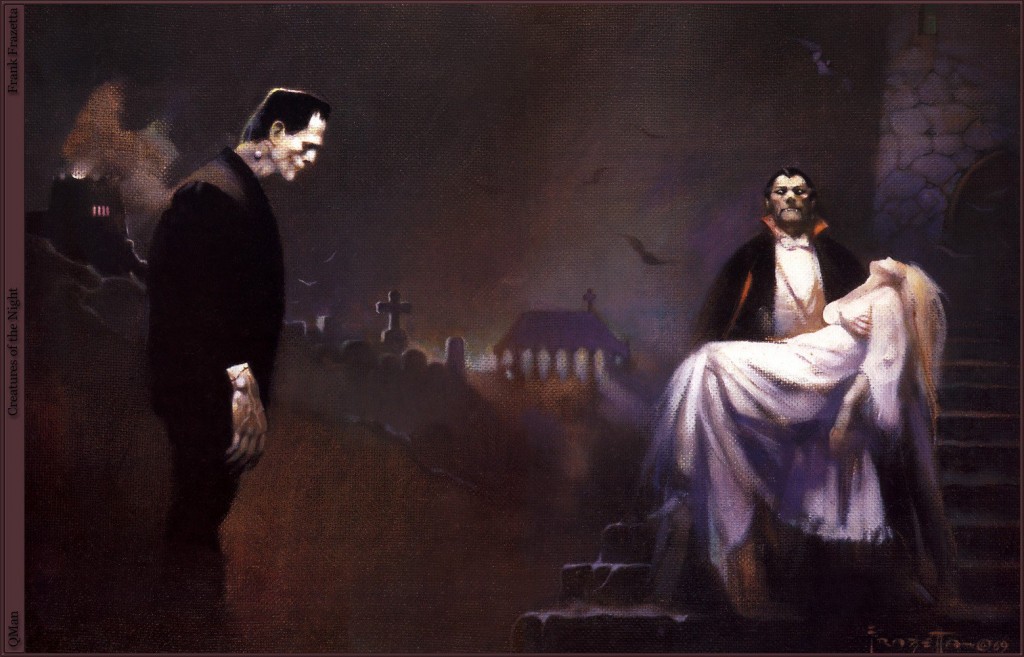


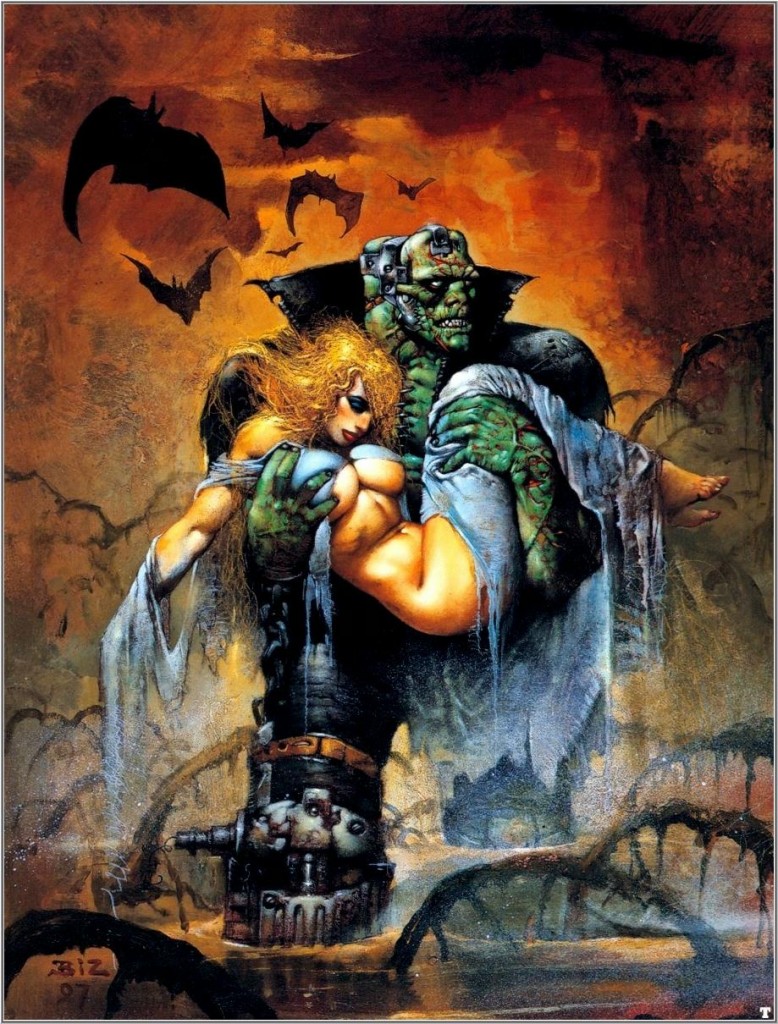

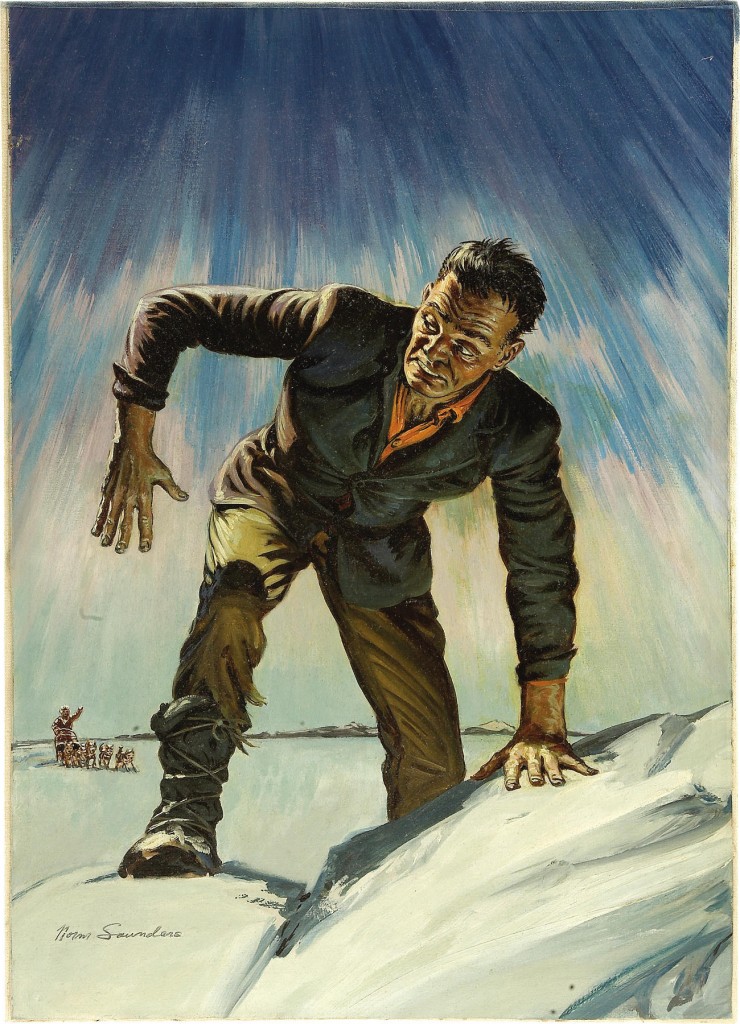

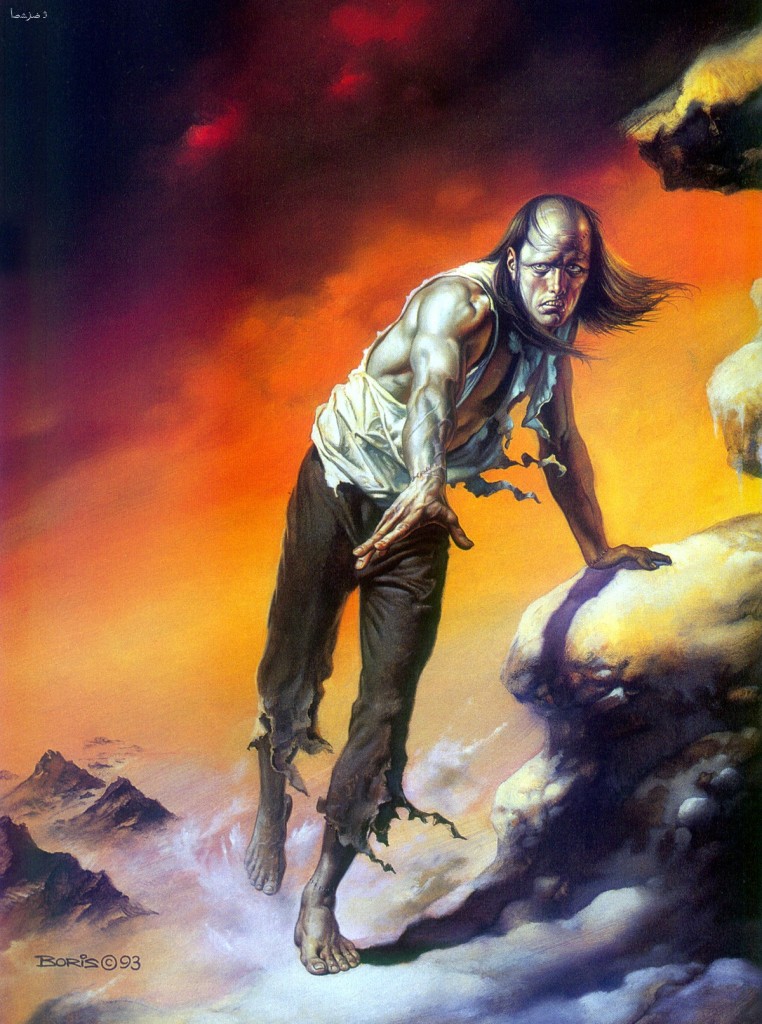
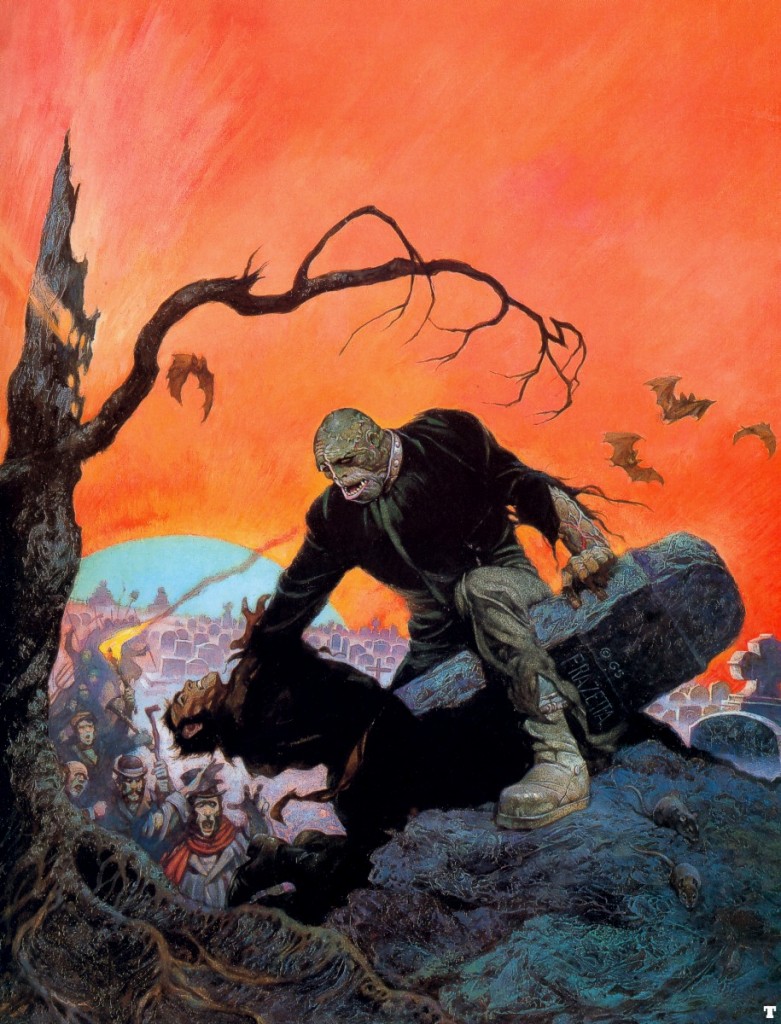
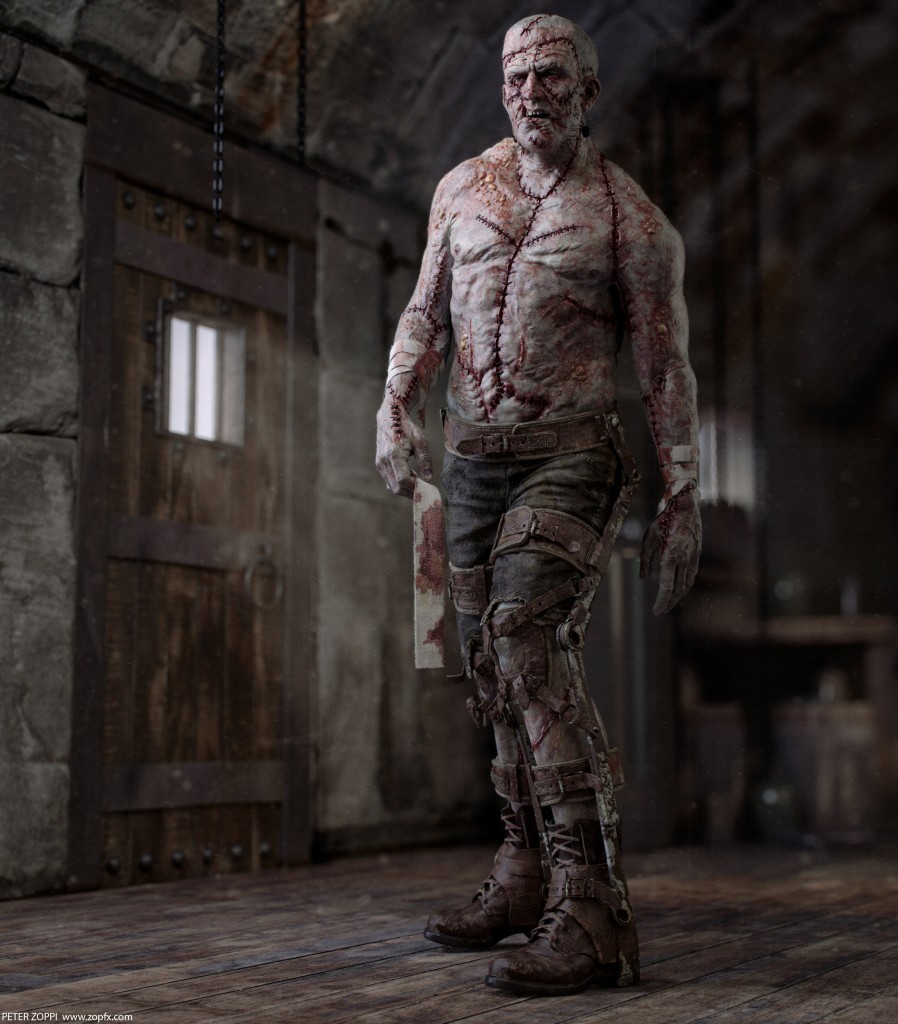
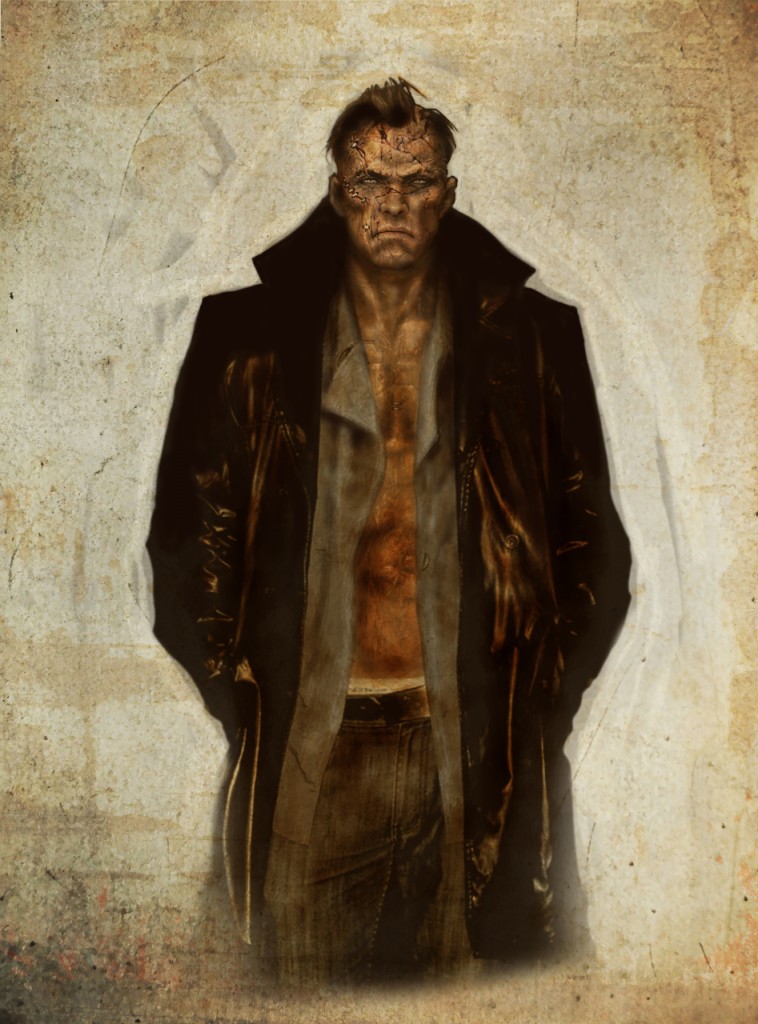









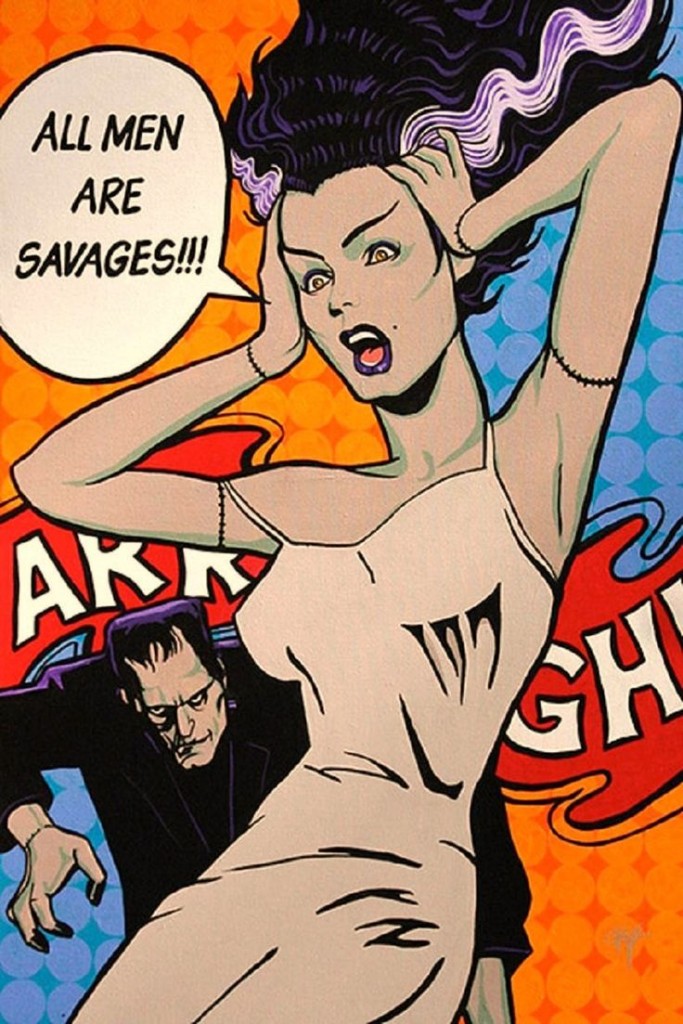
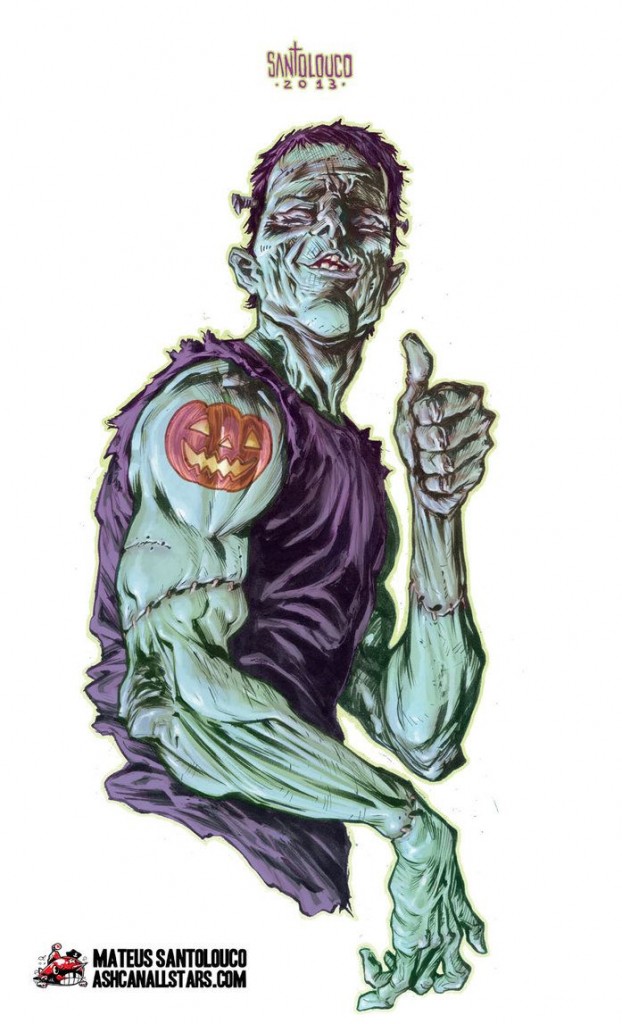


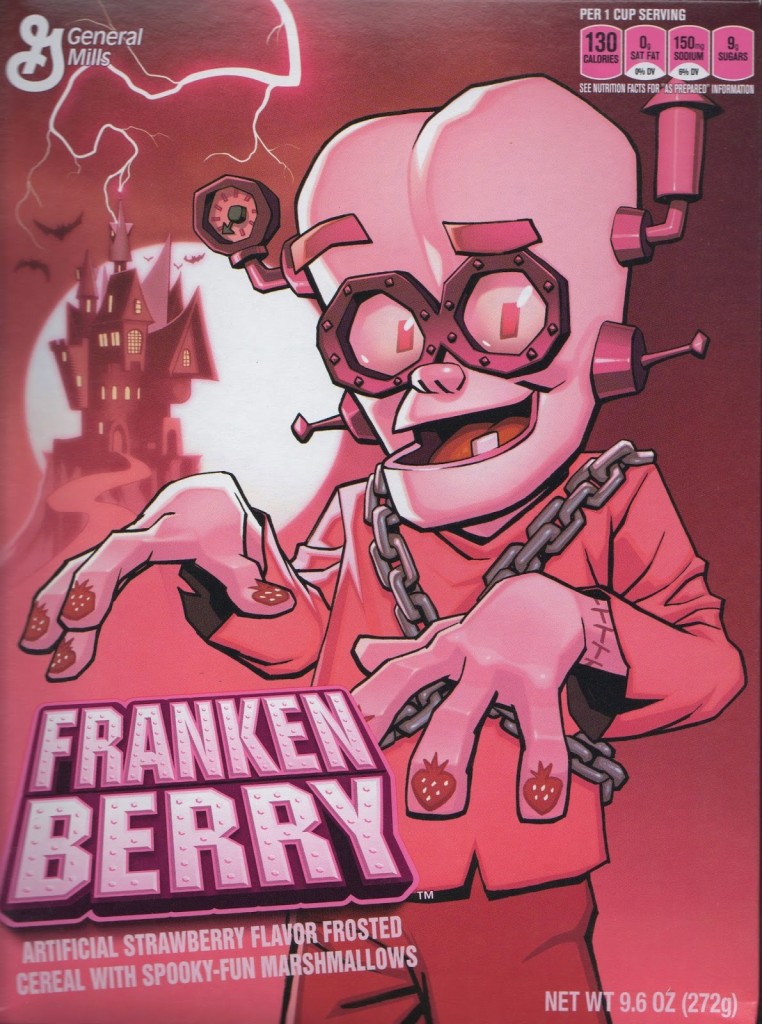












1 Comment